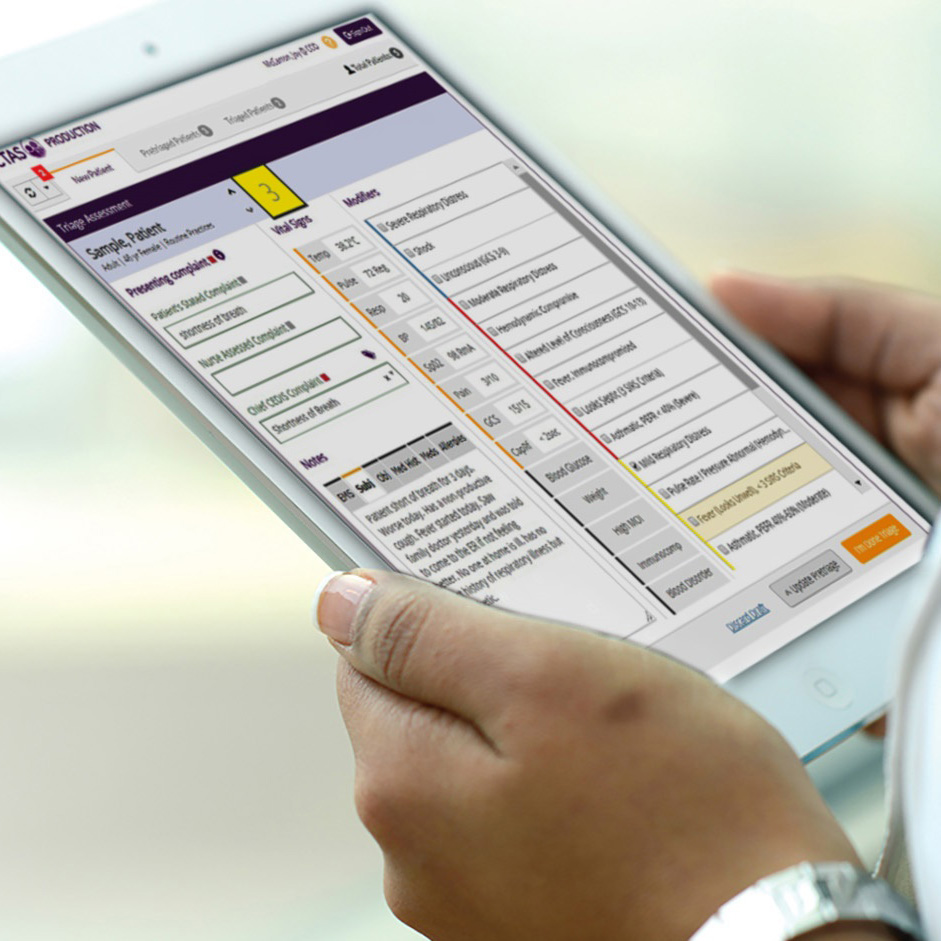Safer, consistent triage across Ontario
oct 8, 2019
When a person arrives at an emergency department, the first clinician they see is a triage nurse who assesses their condition and prioritizes their care based on their level of need.
An electronic triage support tool developed by CCO (in time, Ontario Health) is helping to standardize these assessments and ensure people receive safe and consistent care in emergency departments across Ontario.Known as eCTAS, this tool is an electronic version of the Canadian Triage Acuity Scale (CTAS).
To calculate a CTAS score, triage nurses must consider thousands of possible combinations of 169 different presenting complaints (such as chest pain, confusion or vomiting) and more than 400 modifiers (such as the level of pain, fever or consciousness) that refine the severity of the patient’s vital signs and symptoms.
eCTAS is an easy-to-use solution that allows highly educated and experienced triage nurses to document assessments, enter vital signs and get the right CTAS score for their patients.
Streamlining and standardizing the triage process with eCTAS has been proven to support triage nurses in making accurate decisions in the assignment of CTAS scores. Research shows a 17 percent improvement in triage accuracy for hospitals using eCTAS, affecting approximately one in six patients with minimal impact to triage time. Improved accuracy means fewer patients are under-triaged, improving patient safety in emergency departments across Ontario. The research was published by the American College of Emergency Physicians journal, Annals of Emergency Medicine.
Live two-way communication
Within minutes of arriving at an emergency department, patient information flows to CCO, where the eCTAS system receives the reason for the patient visit (i.e., the presenting complaint). This real-time triage dataset enables CCO to monitor for surges in emergency department use and emerging regional trends (for example, disease outbreaks, suspected substance abuse, vape users, etc).
eCTAS is also able to convey live updates at point of care, providing emergency departments with timely updates about infection risks from around the world. A recent example involved a new antibiotic-resistant strain of typhoid from Pakistan. Within two hours of receiving the information about the risk from Public Health Ontario, CCO had embedded the update in eCTAS. If a triage nurse entered “Pakistan” in the travel history field, an alert appeared on the screen along with instructions on how to control the risk.
Launched in 2016, eCTAS is now used by 108 hospitals in Ontario; over 85 percent of all patients in Ontario emergency departments are triaged with this innovative electronic tool.* Other provinces are now looking at eCTAS and exploring how they can emulate the program to improve the safety and consistency of triage across Canada.
*As of August 2019
Questions about this blog post? Email us at publicaffairs@cancercare.on.ca

